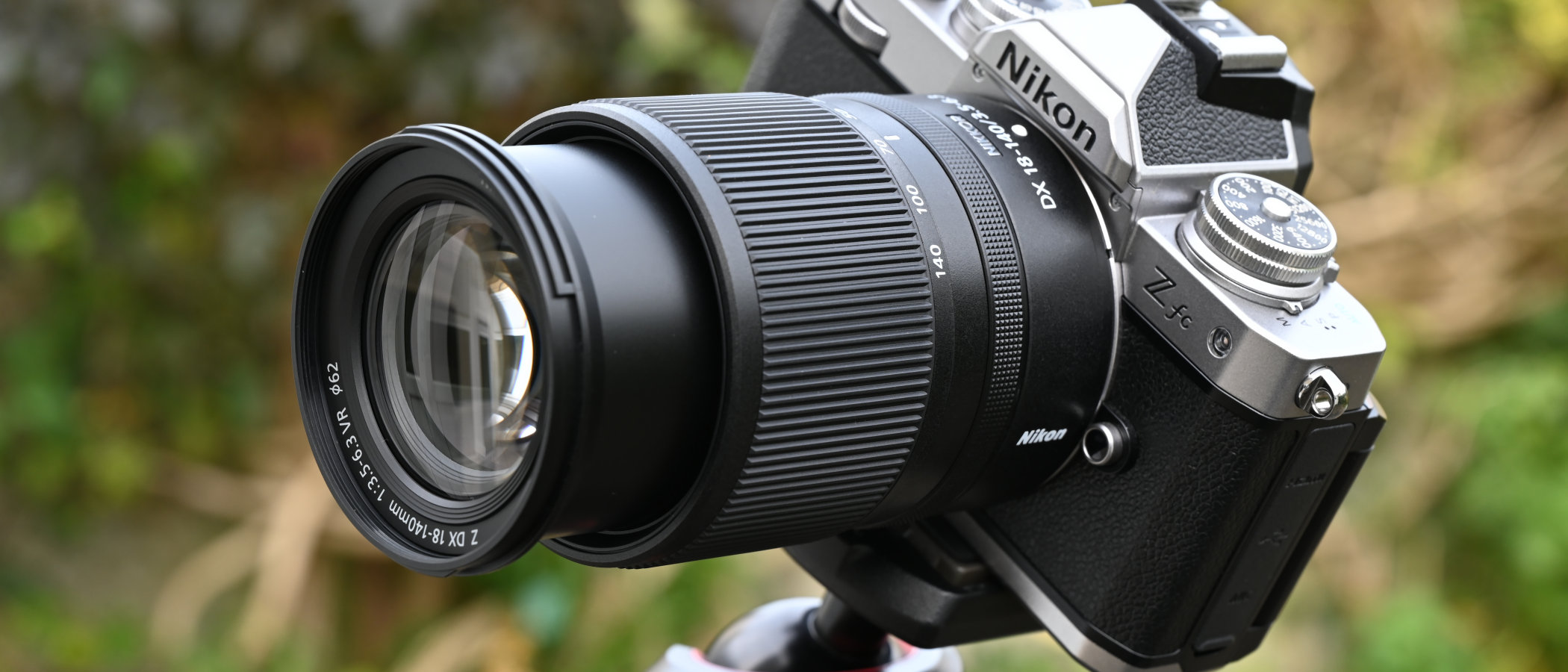Digital Camera World Verdict
Bridging the gap between standard zoom and ‘superzoom’, this is the Z DX mirrorless makeover of Nikon’s popular AF-S DX 18-140mm VR lens, originally created for APS-C format DSLRs. As such, it features the same generous zoom range, equating to 27-210mm in full-frame terms, but is physically smaller and only about two-thirds of the weight. Part of the weight-saving is down to the mounting plate being made from plastic rather than metal, and there’s no weather-seal gasket. Even so, it makes a conveniently compact travel lens and is good for everyday shooting with a Nikon Z 50 or Z fc body, with good image quality and nice handling, enhanced by a 5-stop optical stabilizer and customizable control ring. It’s decent value at the price, costing just a little more than a pair of Nikon Z DX 16-50mm f/3.5-6.3 VR and Z DX 50-250mm f/4.5-6.3 VR lenses.
Pros
- +
Useful zoom range
- +
5-stop optical stabilization
- +
Good overall performance
Cons
- -
Plastic mounting plate and no weather-seals
- -
No auto/manual focus or VR switches
- -
Hood sold separately
Why you can trust Digital Camera World
Nikon’s AF-S DX 18-140mm VR zoom was launched back in 2013 and became a popular kit lens option with mid-range DSLRs from the D5300 and D7100 onwards. Still in production, its optical highlights include one aspherical and one ED (Extra-low Dispersion) element, along with 4-stop VR (Vibration Reduction). Unlike its more up-market F-mount siblings, its ‘Silent Wave’ autofocus system lacks a focus distance scale but the lens features VR on/off and auto/manual focus switches, and is solidly built with a weather-sealed metal mounting plate.
By contrast, the new Z DX edition for APS-C format mirrorless cameras like the Z 50 and Z fc is more compact and weighs in at just 315g, compared with 490g for the older lens. It shares the same optical layout of 17 elements in 13 groups but doubles the aspherical and ED count to two of each. Slimmer and shorter, the Z edition has a 62mm rather than 67mm filter attachment thread and a plastic rather than metal mounting plate, with no weather-seal gasket.
Nikon Z DX 18-140mm f/3.5-6.3 VR: Specifications
- Lens construction: 17 elements in 13 groups
- Angle of view: 76 to 11.5 degrees
- Diaphragm blades: 7
- Minimum aperture: f/22-40
- Minimum focusing distance: 0.2m to 0.4m
- Maximum magnification ratio: 0.33x
- Filter size: 62mm
- Dimensions: 73x90mm
- Weight: 315gEmpty list
Nikon Z DX 18-140mm f/3.5-6.3 VR: Key features
A key feature for most casual shooters is the generous 7.8x zoom range, which stretches from a fairly wide-angle 18mm to useful 140mm telephoto reach, equivalent to 27-210mm in full-frame terms, thanks to the 1.5x crop factor of Nikon DX (APS-C) format cameras. That covers most bases for travel and everyday casual shooting, without the need to carry multiple lenses or swap between them. However, while a couple of millimeters might not sound like much, the relatively tiny, retractable Z DX 16-50mm f/3.5-6.3 VR gives a noticeably wider maximum viewing angle, while the Z DX 50-250mm f/4.5-6.3 VR makes a comfortably small and lightweight addition when you need extra telephoto reach.
Typical of Z-mount lenses, autofocus is driven by a stepping motor instead of the ring-type ultrasonic system featured in the older F-mount 18-140mm lens. It’s quick, virtually silent, and better for shooting video, as it enables smooth autofocus transitions rather than lurching from one focus distance to another. Again, there’s no focus distance scale but that’s par for the course.
Nikon Z DX 18-140mm f/3.5-6.3 VR: Build and handling
The new lens is a little ‘slower’ towards the long end of the zoom range, with an f/6.3 rating that’s one-third of an f/stop narrower. On the plus side, the VR system is an f/stop more effective, rated at 5-stops.
Although the lens is significantly more lightweight than the F-mount version, it feels pretty solid and well-built. The lack of a weather-seal gasket on the mounting plate, to guard against the ingress of water and dust is disappointing. Dust can be an issue as the Z 50 and Z fc lack an automatic in-camera sensor cleaning routine. However, while the mounting plate is ‘only’ plastic, it’s robust and shouldn’t be a problem. As with the older lens, the petal-shaped hood is sold separately rather than being supplied in the box. This time around, it’s an HB-101, which will set you back around £35/$40.
A potential handling disappointment, compared with the older F-mount lens, is that auto/manual focus and VR on/off switches are omitted. You therefore need to resort to in-camera menus to make any changes, which can be relatively time-consuming and a bit of a bother. An upside shared with other budget Z-mount lenses is that the control ring nominally used for manual focusing can be assigned to various other functions when in autofocus mode. In-camera menus make a variety of options available, including control over aperture, exposure compensation and ISO setting. It’s particularly useful for applying stepless aperture changes when shooting video.
Nikon Z DX 18-140mm f/3.5-6.3 VR: PERFORMANCE
Living up to its billing, the autofocus system is snappy and accurate for stills, and enables smooth and virtually silent transitions when shooting video. An absence of focus breathing is a further video-friendly bonus. The optical VR system also lives up to its claims, delivering 5-stop effectiveness.
Sharpness is generally improved, compared with the older F-mount lens, especially outside of the central region of the image frame. However, it drops off a bit across the whole frame at the long end of the zoom range, where sharpness becomes very similar to that of the older lens. Levels of sharpness are also pretty much the same as from the lower-budget Z DX 16-50mm f/3.5-6.3 VR and Z DX 50-250mm f/4.5-6.3 VR, at all directly competing focal lengths.
As we’re increasingly seeing in lenses designed for mirrorless cameras, there’s a heavy dependence on automatic corrections for distortion. Sure enough, the Z DX 18-140mm delivers such huge amounts of distortion that it’s practically unusable without corrections, which are applied in-camera and can’t be switched off. The same goes for editing raw files in Nikon’s NX Studio processing software. We’re not all fans on the reliance of these kind of enhancements but at least it helps to enable a fairly compact and lightweight build for lenses, in keeping with mirrorless camera bodies.
Nikon Z DX 18-140mm f/3.5-6.3 VR: Sample images
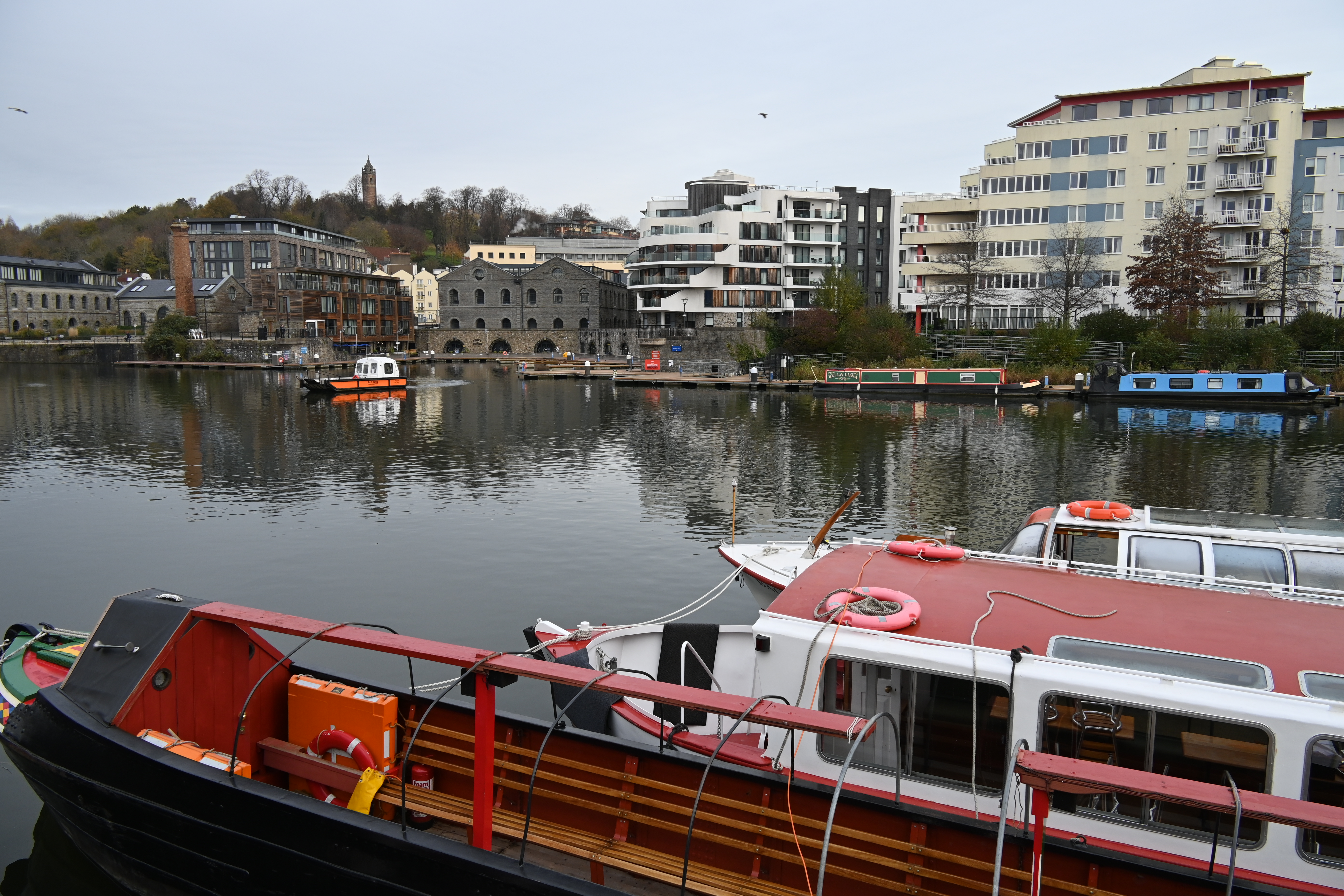
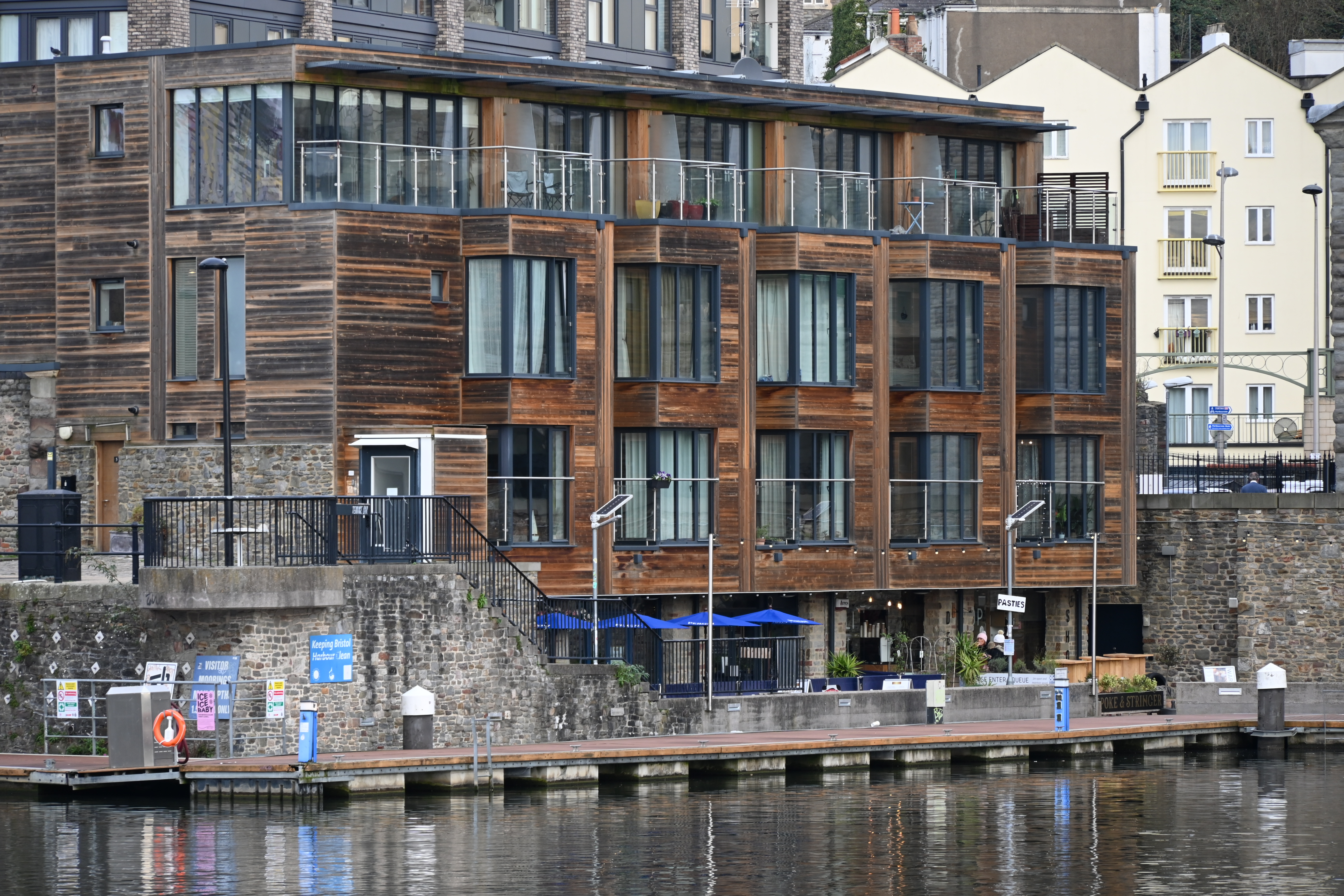
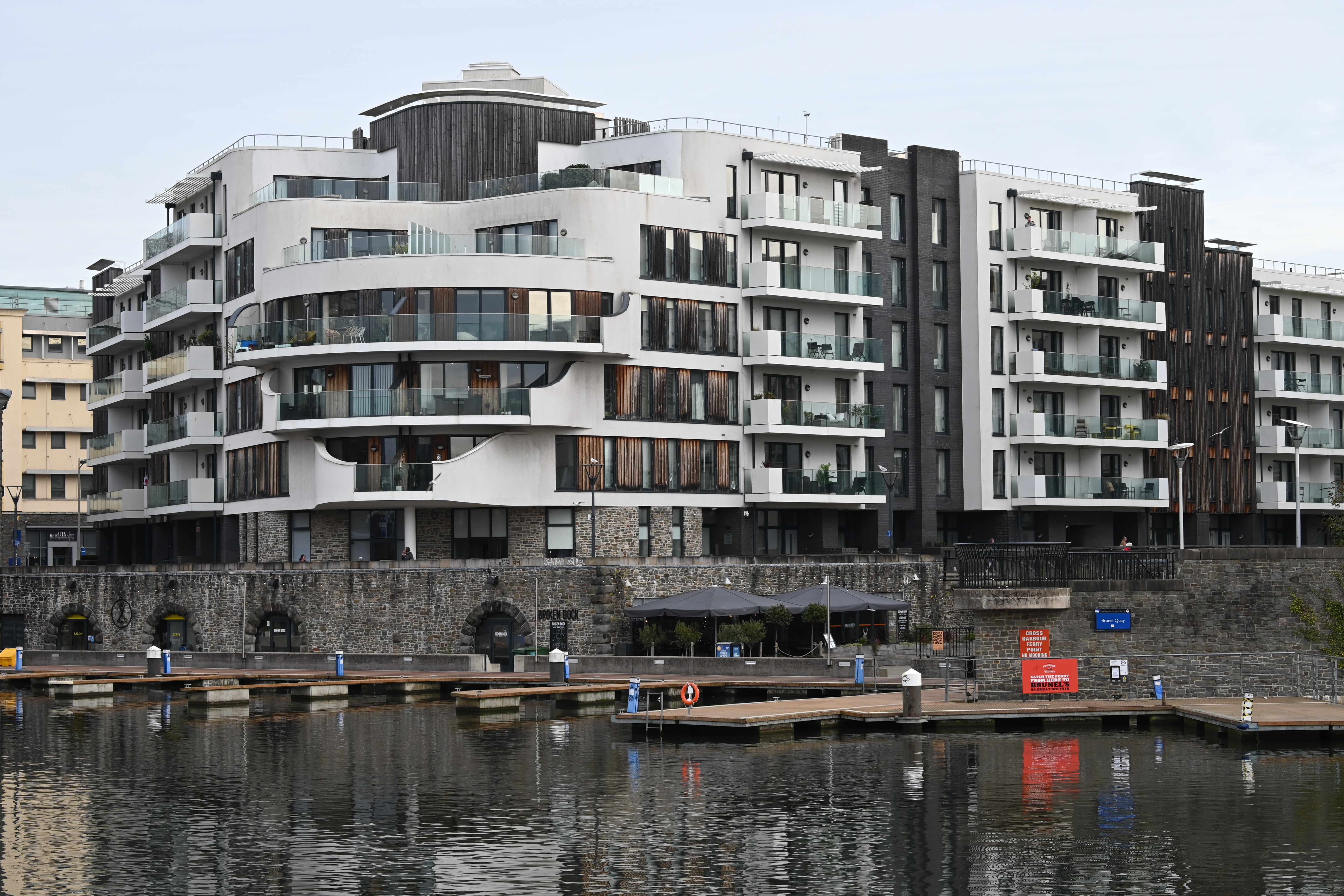
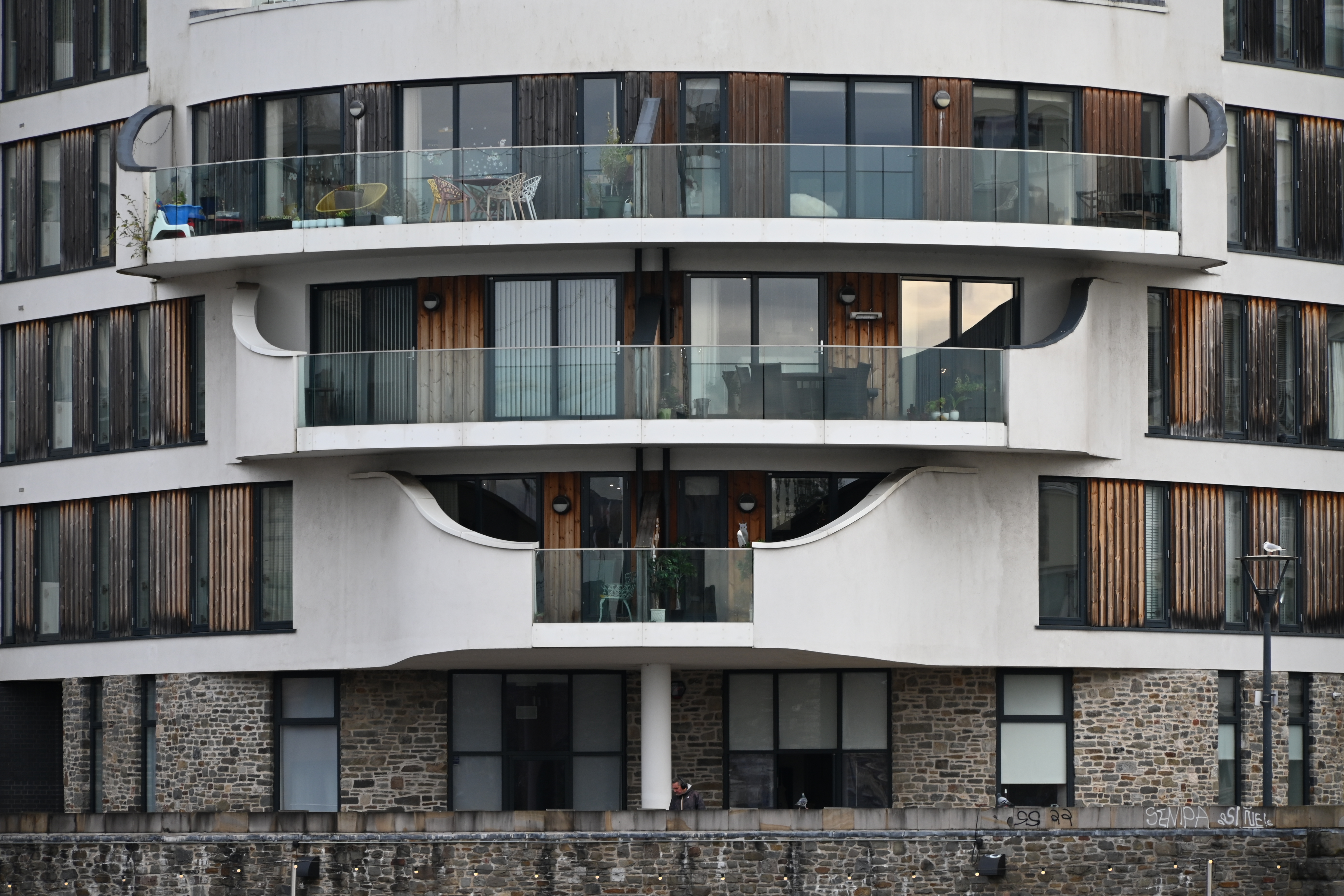



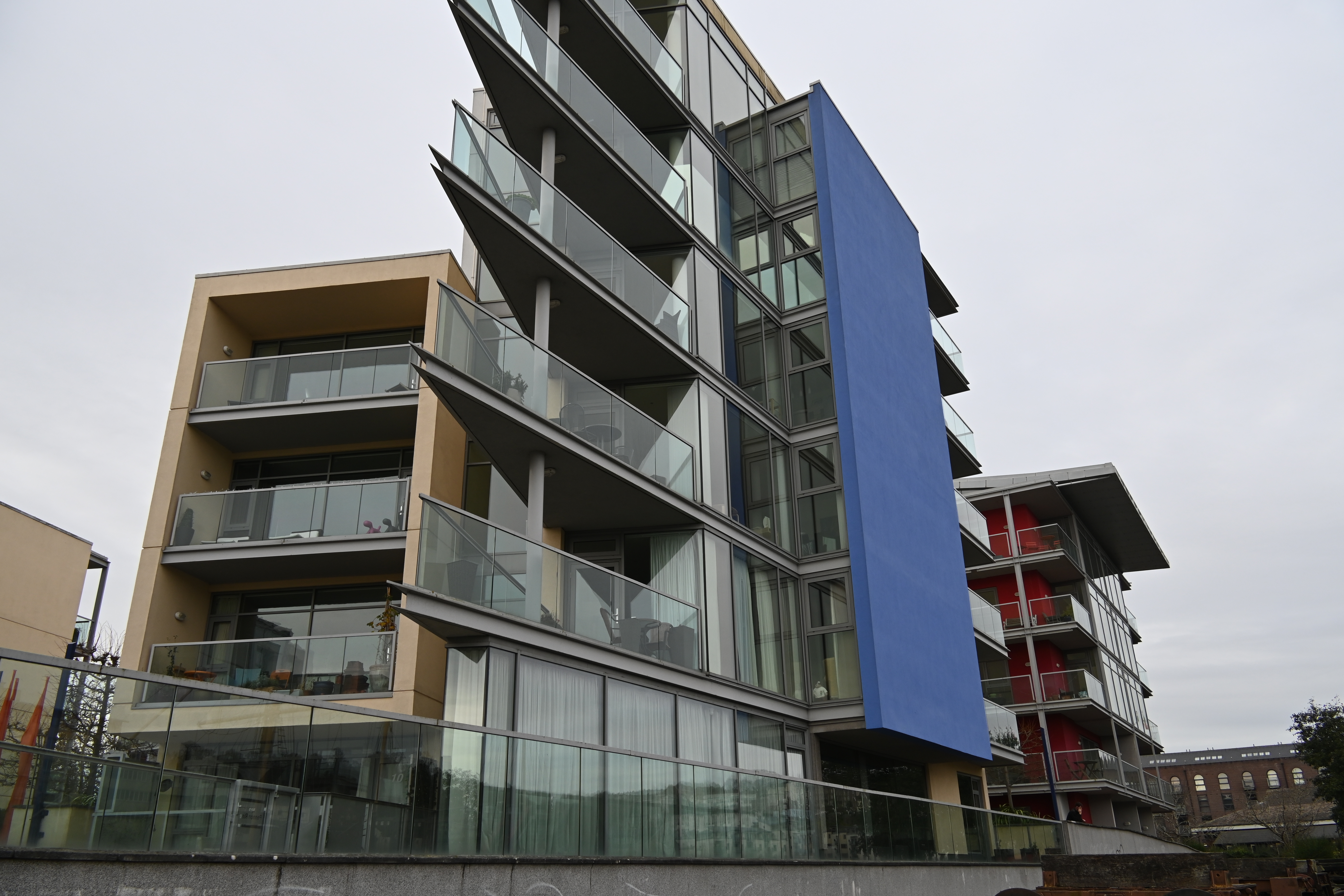
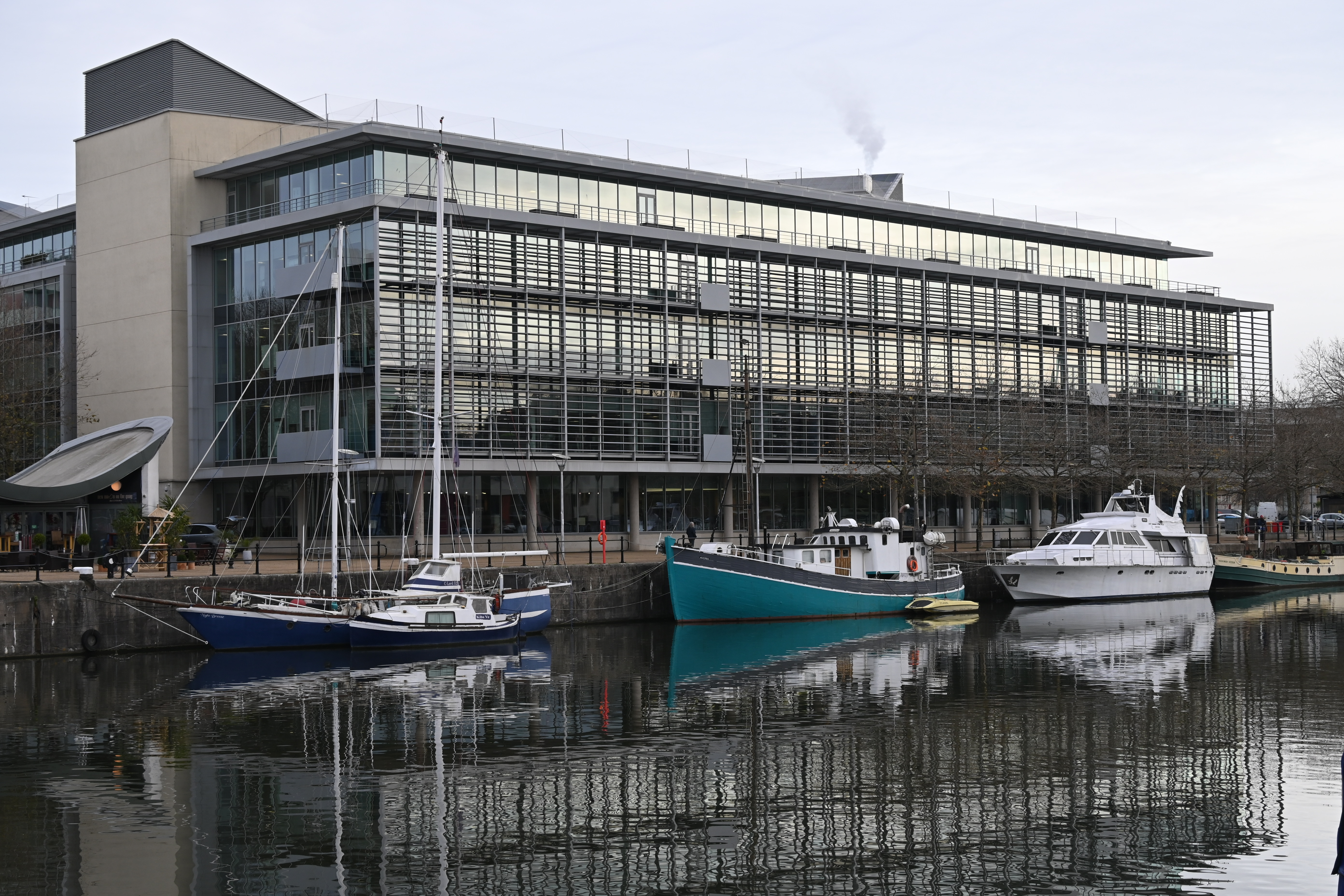


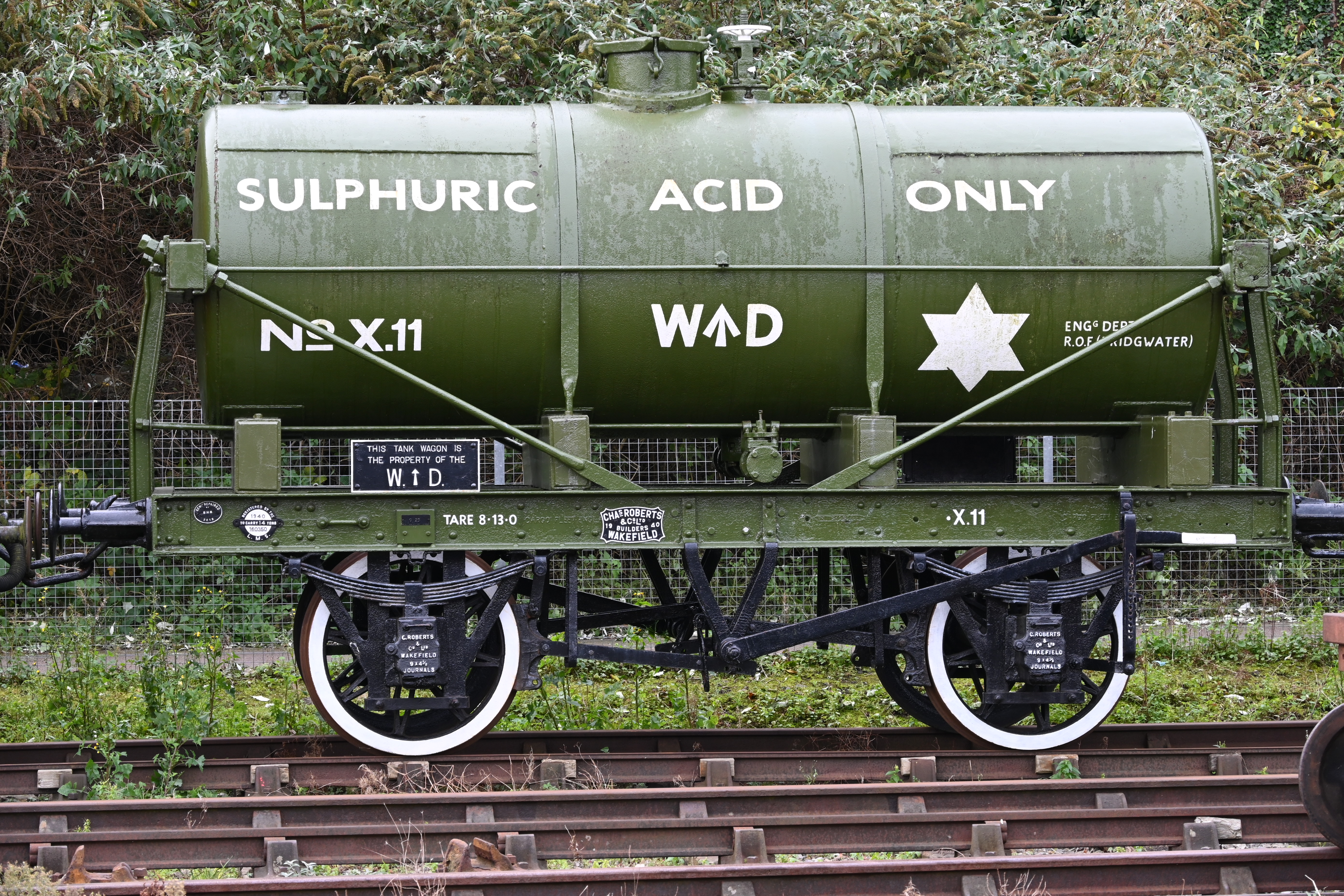
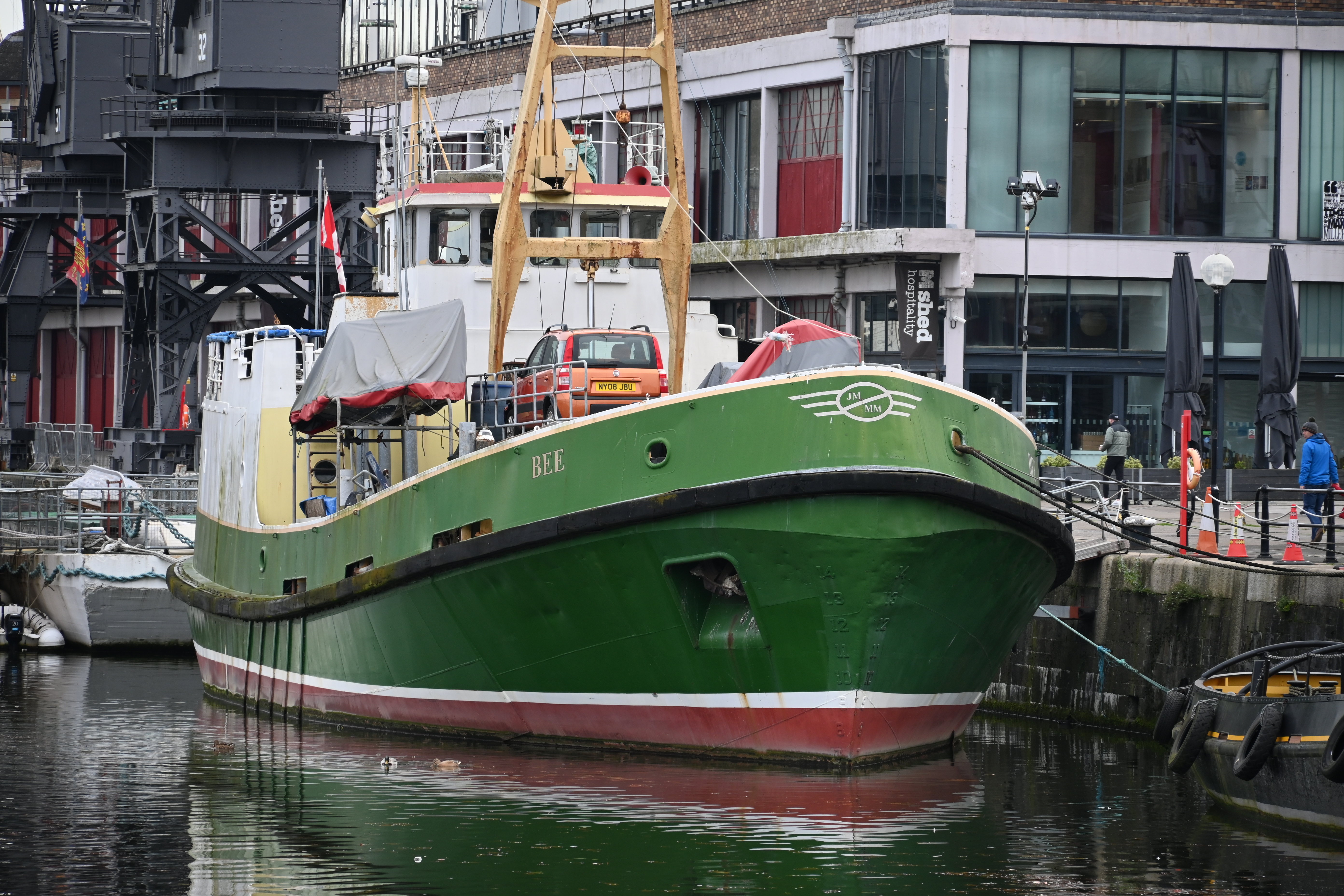

Automatic distortion correction enabled

Automatic distortion correction disabled


Nikon Z DX 18-140mm f/3.5-6.3 VR: Lab results
We run a range of lab tests under controlled conditions, using the Imatest Master testing suite. Photos of test charts are taken across the range of apertures and zooms (where available), then analyzed for sharpness, distortion and chromatic aberrations.
We use Imatest SFR (spatial frequency response) charts and analysis software to plot lens resolution at the centre of the image frame, corners and mid-point distances, across the range of aperture settings and, with zoom lenses, at four different focal lengths. The tests also measure distortion and color fringing (chromatic aberration).
Sharpness:
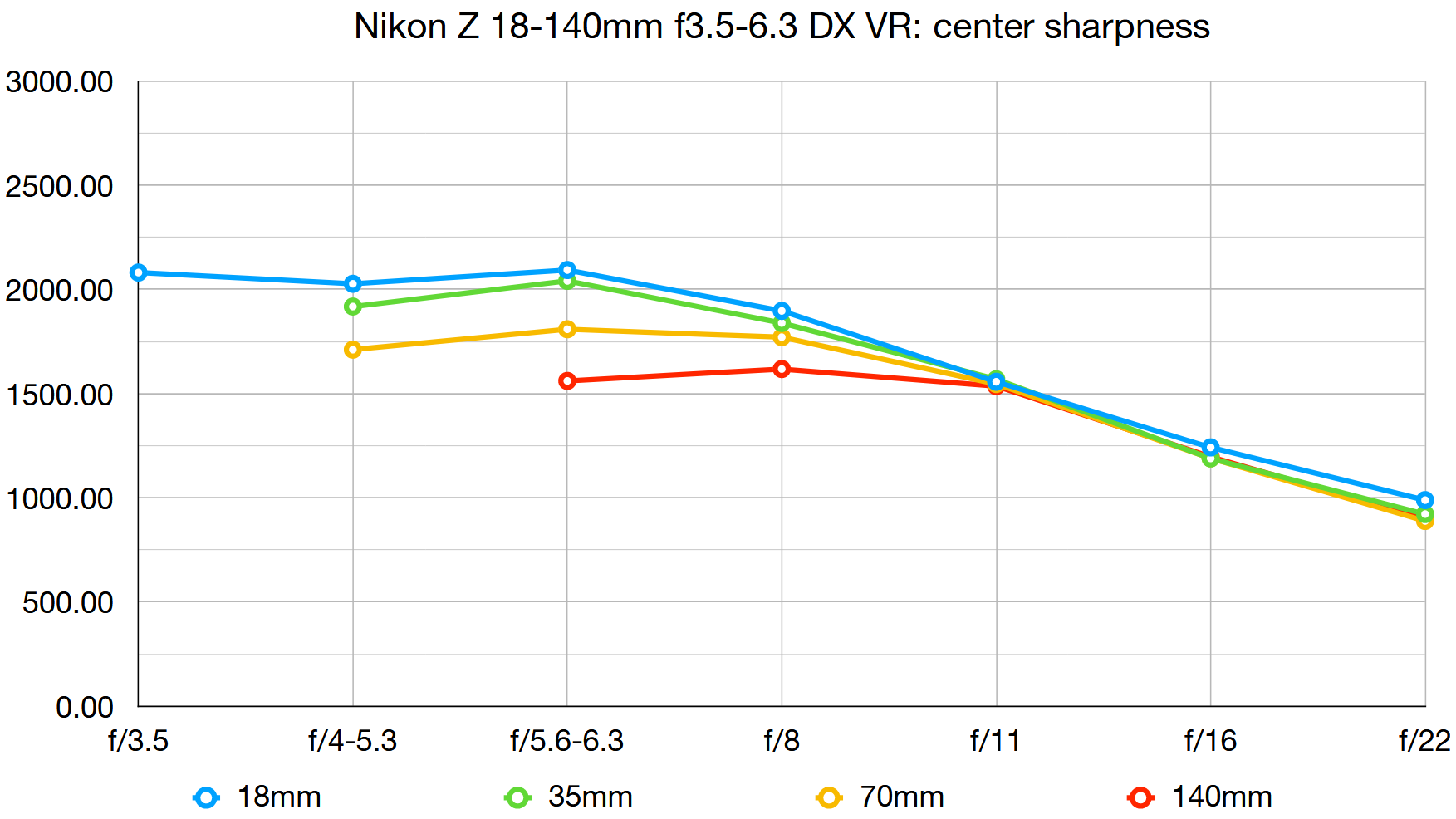
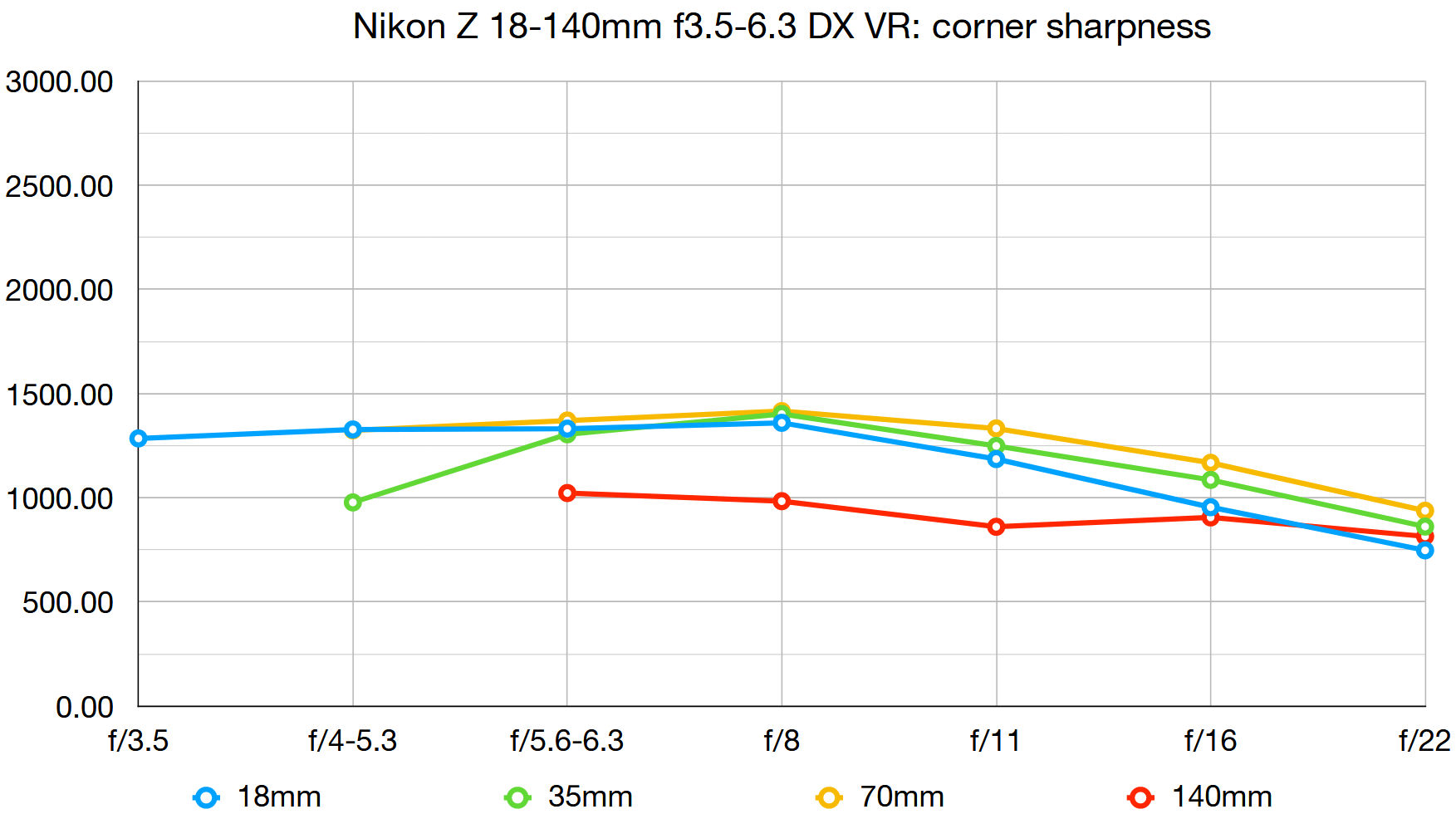
Centre-sharpness at both ends of the zoom range is very similar to that of the older F-mount 18-140mm lens, being excellent at 18mm and less inspiring at 140mm. The Z-mount lens beats its forebear for mid-frame sharpness in the 18-50mm zoom range, while edge/corner-sharpness is also much improved at 18mm and 70mm focal lengths. Overall, the Z DX 18-140mm delivers impressive sharpness, considering its powerful 7.8x zoom range.
Fringing:
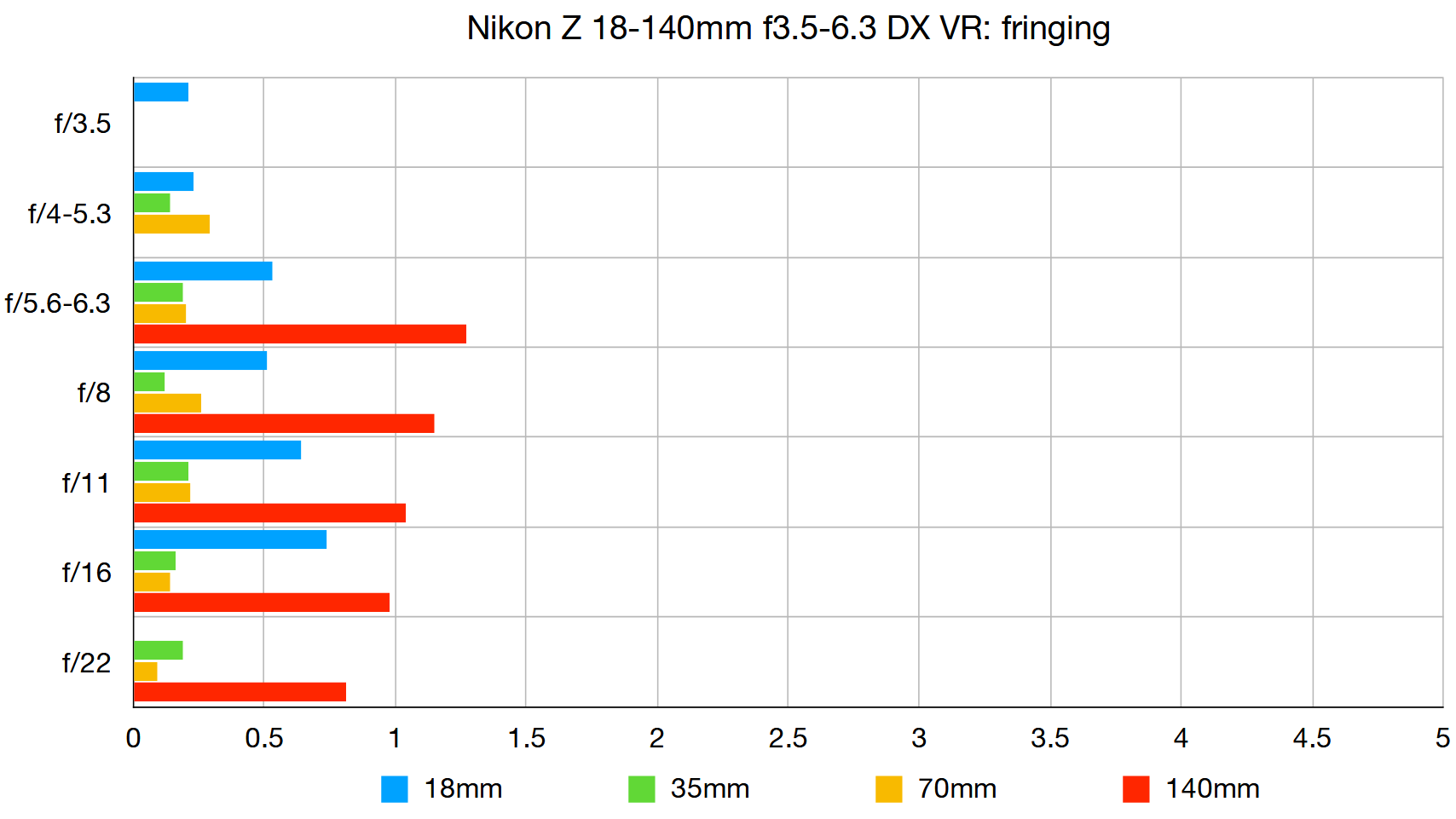
There appears to be much less color fringing than with the old F-mount lens, especially towards the edges and corners of the image frame. However, in-camera correction flatters the results and can’t be switched off for JPEGs, nor for raw files processed in Adobe Camera Raw or Nikon’s own NX Studio. The net result is that color fringing is absolutely negligible.
Distortion:

As with color fringing, distortion is corrected automatically for both JPEG and raw files. As such, there’s only minimal barrel distortion at 18mm and virtually no distortion at all at longer zoom settings. However, when checking barrel distortion at 18mm, viewing raw files in Corel PaintShop Pro, we found it was very severe when uncorrected.
Nikon Z DX 18-140mm f/3.5-6.3 VR: Verdict
Some might consider buying this lens to replace a pair of Z DX 16-50mm f/3.5-6.3 VR and Z DX 50-250mm f/4.5-6.3 VR zooms, often sold as part of a Z 50 kit. There are pros and cons. The Z DX 18-140mm doesn’t deliver a step up in image quality or all-round performance, and the build quality and handling aren’t really any better. On the plus side, the more versatile 18-140mm zoom range means you won’t need to swap the lens on your camera so often, if at all.
The downside is that you miss out on the almost ‘pancake’ proportions of the 16-50mm, with its ultra-lightweight, retractable design. And sticking with the pair of ‘kit’ lenses gives you a wider maximum viewing angle at one end, along with longer telephoto reach at the other. Ultimately, if you’ve only got the 16-50mm, and you don’t mind swapping the lens on your camera for different shooting scenarios, there’s a lot to be said for buying an additional Z DX 50-250mm f/4.5-6.3 VR and giving the 18-140mm a miss.
Read more:
Best Nikon Z lenses
The best Nikon lenses
The best Nikon camera
Matthew Richards is a photographer and journalist who has spent years using and reviewing all manner of photo gear. He is Digital Camera World's principal lens reviewer – and has tested more primes and zooms than most people have had hot dinners!
His expertise with equipment doesn’t end there, though. He is also an encyclopedia when it comes to all manner of cameras, camera holsters and bags, flashguns, tripods and heads, printers, papers and inks, and just about anything imaging-related.
In an earlier life he was a broadcast engineer at the BBC, as well as a former editor of PC Guide.
